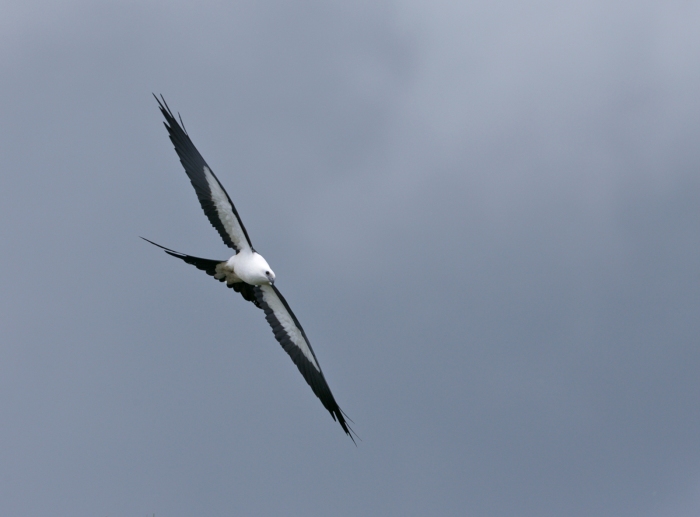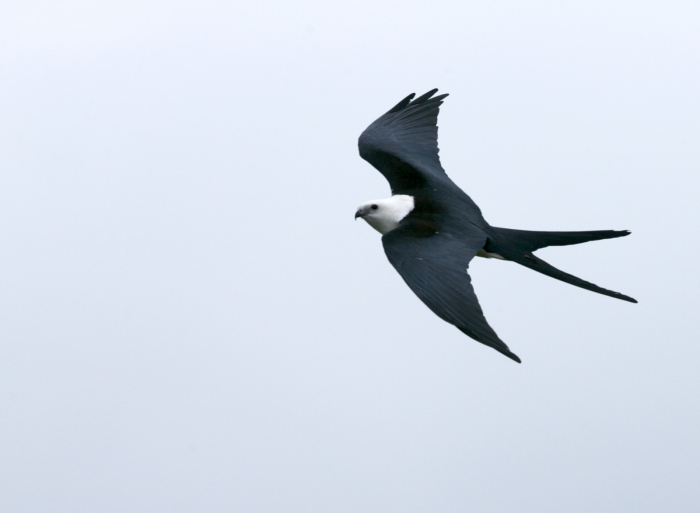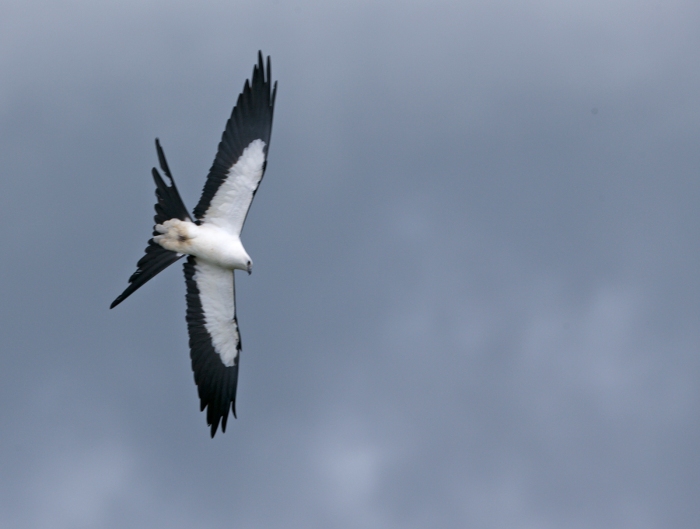Return of Bird of the Week: Swallow-tailed Kite
As promised, WC will take a break from Tanagers for a while, and spend some time with bigger birds instead. Specifically, with Accipitridae, the world-wide family of birds sometimes called raptors, and at least to start, with Kites. When WC was just getting started in birding, it was a shock to learn that “kite” isn’t a specific family of birds, or even a single genus. It’s a catch-all lay term for medium- to small-sized raptors with pointy wings. “Hawks” and “falcons” refer to specific related groups; “kites” are just hawks with a different name.
We’ll start with the very handsome, elegant Swallow-tailed Kite. WC thinks it’s the most aerobatic of the raptors.

Swallow-tailed Kite, crest of the Andes, Ecuador
In flight, it is unmistakeable, with the white head and body, white under coverts and black leading edges and primaries. Like many raptors, it hunts by soaring, but it flaps its wings rarely, steering mostly with its tail, which will rotate to a 90° angle. And in the species the tail gives the species it English name. The Swallow-taiedl Kite also has an effortless, elegant-looking hover, beautiful to watch.

Swallow-tailed Kite, crest of the Andes, Ecuador
Swallow-tailed Kites breed in the southernmost United States in low numbers, mostly along the Gulf Coast and in Florida. But mostly they are a tropical species. In the U.S., they’re found mostly in wetlands, where they range over swamp and lowland forests as well as freshwater and brackish marshes.

Swallow-tailed Kite, crest of the Andes, Ecuador
This is gregarious species, with several nests commonly in sight of each other. Communal night roosts near nests are common, and premigration roosts may draw hundreds of kites from large areas. Although flying insects are the primary prey of this species during most of the year, nesting birds feed their young a wide array of small vertebrates, including tree frogs, lizards, nestling birds and snakes. The birds hunt from the tree canopy or emergent vegetation of marshes and ponds while in flight.
In the United States, this species’ breeding range has contracted dramatically; it formerly nested in as many as 29 states. Now it’s commonly seen in only seven. The North American birds are regarded as a subspecies, Elanoides forficatus forficatus. The South American birds are Elanoides forficatus yetapa. Almost nothing is known of the biology, status, or conservation needs of the southern subspecies, E. f. yetapa, or of the migration routes and wintering destinations of E. f. forficatus. The species is classified as Endangered in South Carolina.
The cause of the decline in North American birds is unknown;, although habitat loss is suspected. It is concerning. No Swallow-tailed Kites have been bred in captivity, and no attempts have been made to hatch eggs from natural nests under artificial conditions.
For more bird photographs, please visit Frozen Feather Images.